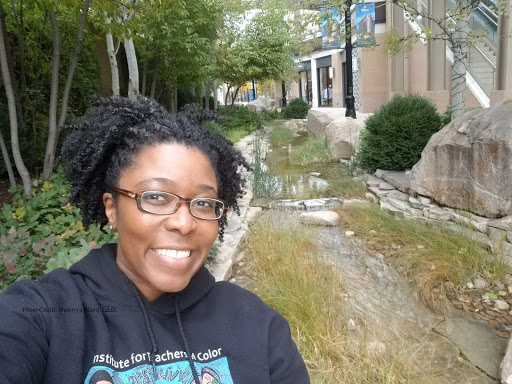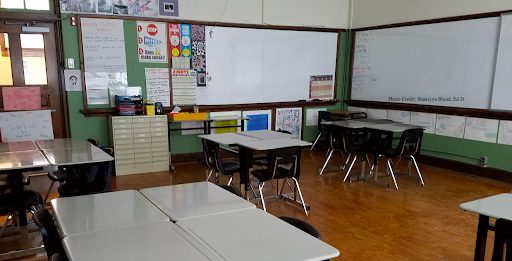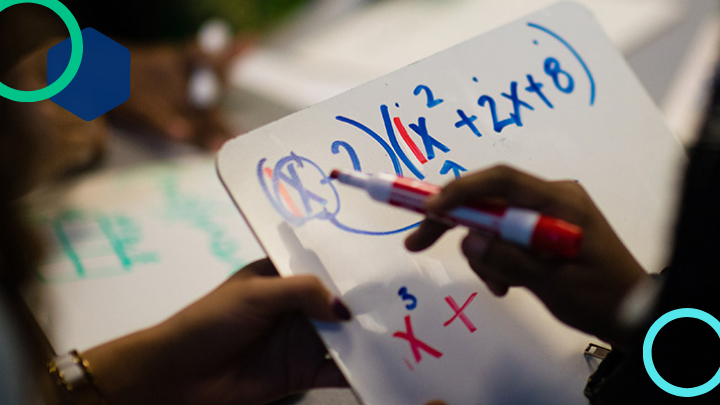February is Black History Month. However, educators should not limit their focus on the inclusion of Black voices to just this month. Culturally responsive teaching and learning can be integrated into any subject, every day of the year.
Below, Dr. Shakiyya Bland, a BetterLesson Master Teacher, shares how equity is an essential part of mathematics.
Culturally relevant and responsive mathematics teaching is trending now and has been for quite some time. However, it is not a movement to me. It is a vital pedagogical mission that must be sustained and progress the ways in which mathematics is communicated and applied. My joy for mathematics began early in life, yet it was in the eighth-grade that I perceived mathematics as more than a puzzle to solve. It became an instrument to navigate predominantly white educational spaces.
Mathematics belongs to all of us, regardless of race, gender, sexual orientation, and ability. Mr. Stavropoulos, my eighth-grade algebra teacher not only told me but he showed me. His classroom was a space of affirmation. He modeled mathematics in dynamically engaging ways that spoke to me. He unwrapped polynomial equations into bite-size chunks. He rearranged functions on dry-erase boards as a street artist uses the local coffee shop wall as a canvas. Pure and simple, he shared his love for mathematics. Although the textbook authors were predominantly white and male, Mr. Stav created space for me.

Dr. Bland after presenting at the National Council of Teachers of Mathematics for the first time.
I still believe I belong and yet, I do not see significant diverse representation in secondary mathematics classrooms. Representation matters. I desire for all students, especially black female students to see themselves as valuable contributors to mathematics.
Once I came to understand how basic algebra could break down the most complex calculations, I knew that all I needed was a sharpened no. 2 pencil and some loose-leaf notebook paper in order to effectively resolve any mathematical problem in a real-world narrative, whether it was exposed or hidden. Sitting in my university math methods course, one of two pre-service educators of color, I found solace in the fact that my mathematical
answers were factual, undisputed calculations that afforded me a sense of security that I found to be so comforting.
In the words of Notorious B.I.G., “It was all a dream.” Fast-forward to my third-year of teaching and first at the middle school level. To put it mildly, a 90-minute block of time for sixth-graders in mathematics is akin to a game of Othello – students versus teacher; each of us taking turns attempting to convert the other and gain control of the classroom. I learned my greatest lessons from students at this junior high level: forgiveness, grace, community, joy, authenticity; and never take yourself too seriously. Teaching middle school scholars mathematics during these precious class periods pushed me to work on my personal relationship with each individual’s brilliance and with mathematics in order to effectively communicate its beautiful complexity to a new audience of scholars.
We couldn’t just talk about mathematics – we had to play and interact with it. Learn how it operated within the classroom and beyond. Returning to eighth-grade as an educator, my students and I explored angle relationships within their geometric cities ruled by the precision of parallel and perpendicular streets, constructed clinometers investigating the language of trigonometry, studied geometric nets for packaging, collected relevant statistics from student-generated surveys in partnership with food manufacturing companies, vicariously traveled to Morocco with a parent architect to learn the significance of the role of culture and history in design. We drew a scale model replica in collaboration with a local muralist. Listening to the sounds of Pi and Phi (the golden ratio), we
tessellated our mathematical rhythms while the percussion of parabolic functions projected by catapult pulley systems filled the air. We created our own olympics to understand rates and proportional relationships. Whether we were inside or outside, mathematics was there and we listened with our full selves to notice, to understand, to question and wonder.

Dr. Bland’s 8th grade classroom.
Prior to teaching middle school mathematics, I miscalculated the beauty of the algorithmic designs of math. I ignored the proof and focused on the linear equations without respecting math’s testimony of full-circle rainbows,
asymmetrical embroidery of Ghana braids and Navajo Nation math circles. In quiet moments, I catch fractals pirouetting through cherry blossom branches. The orchestrated tones of trigonometric sequences move my heart to love. There is no more vacant pause after students ask, “When are we ever going to use this?” The instructional strategies for exchanging mathematical cultural capital remains present in my teaching and learning as ways of being and engaging with others.
There are so many visionary mathematicians from Katherine Johnson, to Toya Jones Frank, Ph.D., Francis Su, Ph.D., Rochelle Gutierrez, Ph.D., Danny Martin, Ph.D., classroom educators, and up and coming scholars who show up in preschools and grad schools. Watching my 82-year old grandmother arrange carefully cut swatches of fabrics and delicately arrange them with precision using transformational geometry to design, I smile. I smile with consideration, for her mathematically intuitive gifts are not new to my ancestral line.
So, how can we help students find their own cultural connections? I cultivate critical consciousness through the process of examining and rewriting lessons that promote authentic student representation, increase student engagement, and incorporate multiple perspectives through the lens of racial, cultural, gender, physical, and learning differences. I have been developing my own personal-professional action plan to guide the process in constructing lessons and units. Critical consciousness leads me to identify culturally-sustaining values and key concepts for each lesson design. It is important to consider identity, systems, hegemony (i.e., the economic,
political, social, or cultural authority or influence of one group over another), and humanization (i.e. recognize humanity) when developing curriculum.
I advocate for more family events that invite the community to experience and contribute to mathematics as participants in learning activities at schools, libraries, and communal recreational areas. By providing opportunities in class for students to highlight and map community cultural assets and resources, learning is accelerated and students’ cultural capital is centered and affirmed.
As educators, we co-construct neurological bridges with students and families as we engage in learning from and with each other. As a photographer, I appreciate the negative space as an offering of balance to the focal point. Productive struggle and critical mathematical discourse offer that same energy to a learning space. Let’s begin the community conversation with these questions: How can the teaching of mathematics be integral in advancing classroom and local community relationships? How are students positioned and encouraged to contribute to the discovery of mathematics in your learning spaces? How do you integrate history, music, and art in mathematics courses as a means of communication and understanding of mathematics? How do learners recognize that their very DNA is composed of mathematics?






